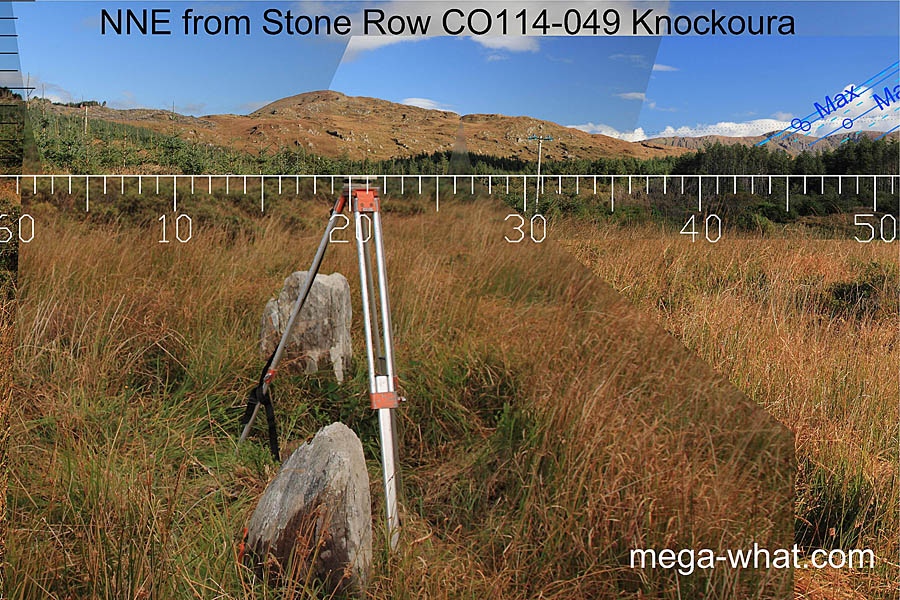
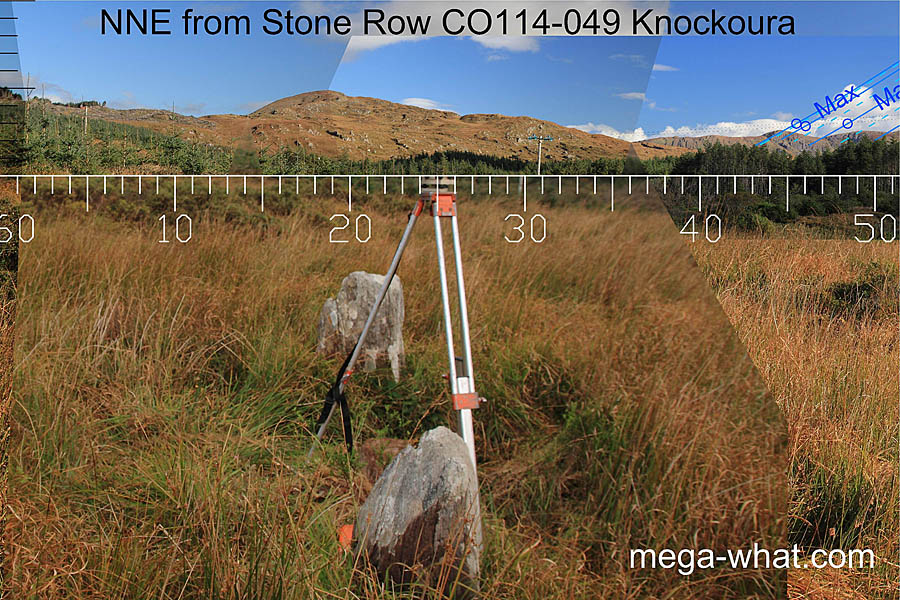 The overall row axis is about 17° clockwise of due north-south.
The overall row axis is about 17° clockwise of due north-south.
The north-east and south-west stones have axes that are more clockwise again, approximately bisecting the space between north-south and the north-eastern major standstillLunistice positions vary cyclically over an 18.6 year period but are fairly static for more than a year at either end of the range.
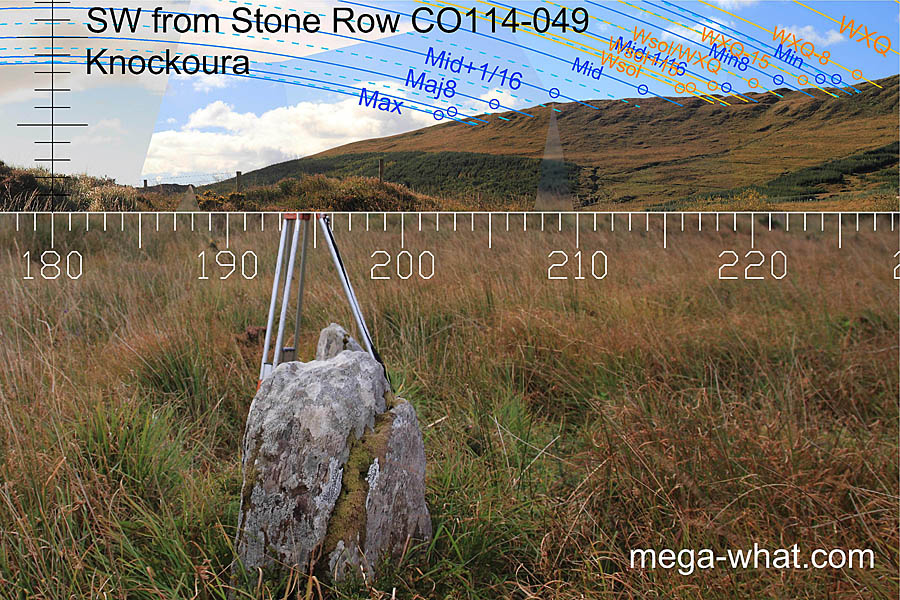
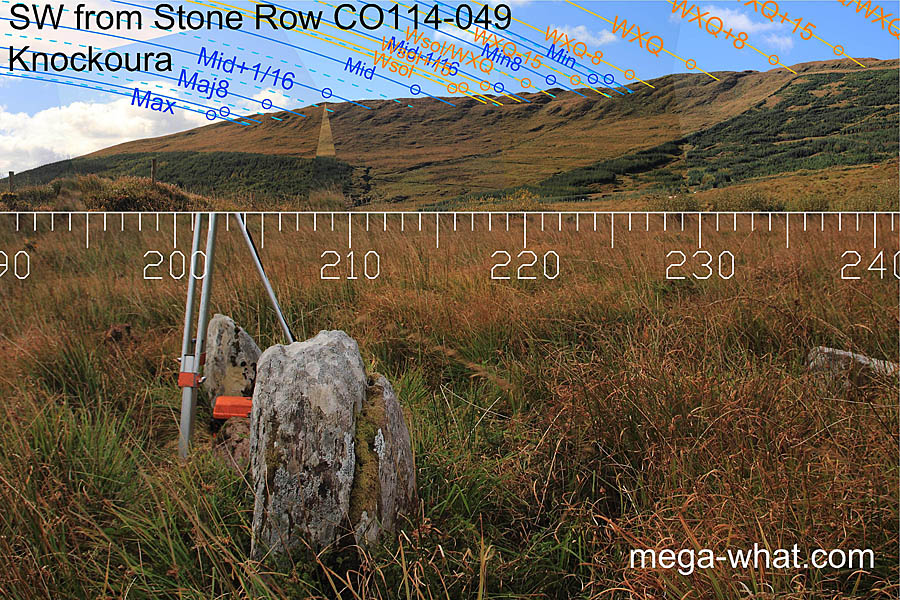 To the south-west, the row axis could possibly have indicated major standstillLunistice positions vary cyclically over an 18.6 year period but are fairly static for more than a year at either end of the range
if the ridge was fully forested at the time.
The axes of the north-east and south-west stones indicate lunar positions on a naked horizon.
To the south-west, the row axis could possibly have indicated major standstillLunistice positions vary cyclically over an 18.6 year period but are fairly static for more than a year at either end of the range
if the ridge was fully forested at the time.
The axes of the north-east and south-west stones indicate lunar positions on a naked horizon.
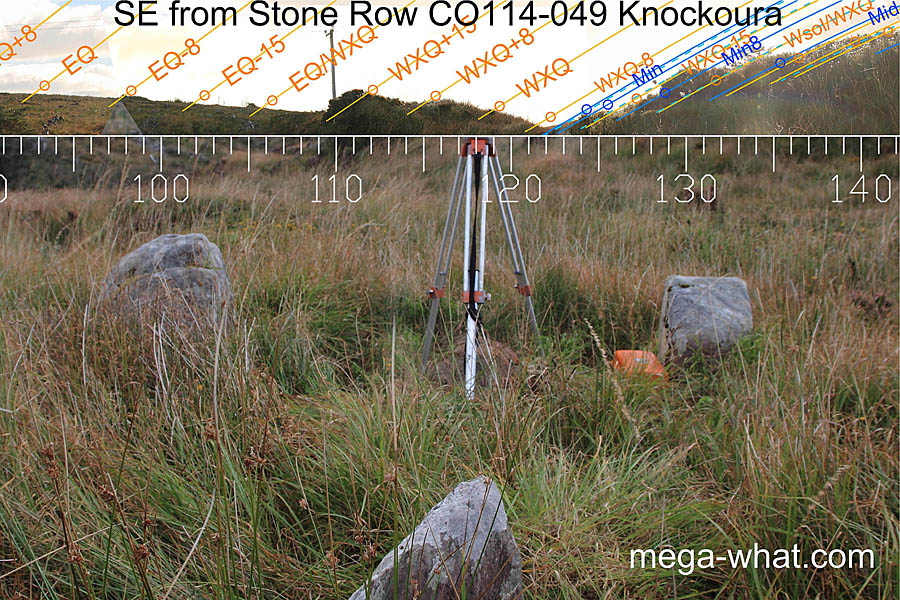
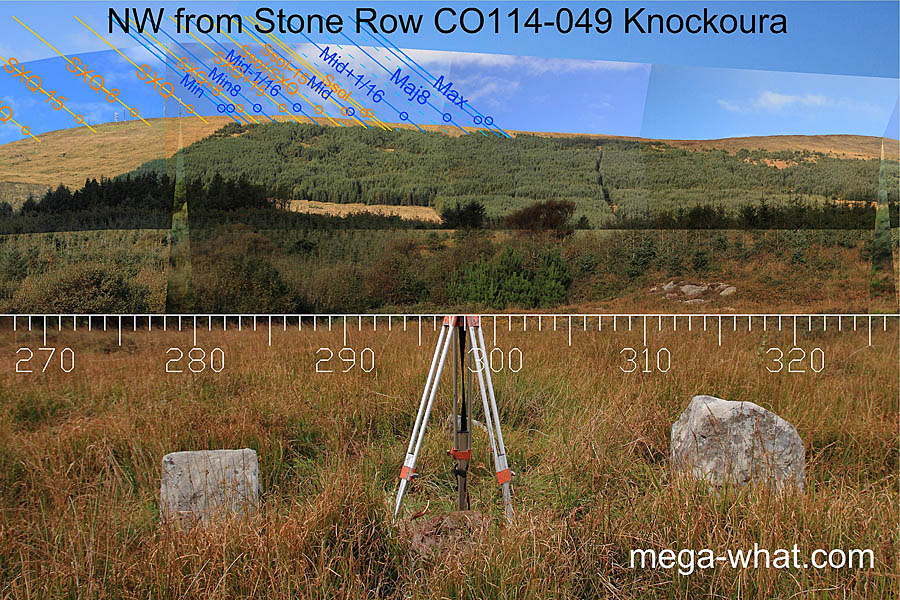 There is a fourth stone, c.2.5m to the west of the row.
There is a fourth stone, c.2.5m to the west of the row.
A line from it that passes over the centre stone indicates winter cross-quarter sunrises on local ground.
A line from the centre stone that passes over the fourth stone indicates major standstillLunistice positions vary cyclically over an 18.6 year period but are fairly static for more than a year at either end of the range moonsets.
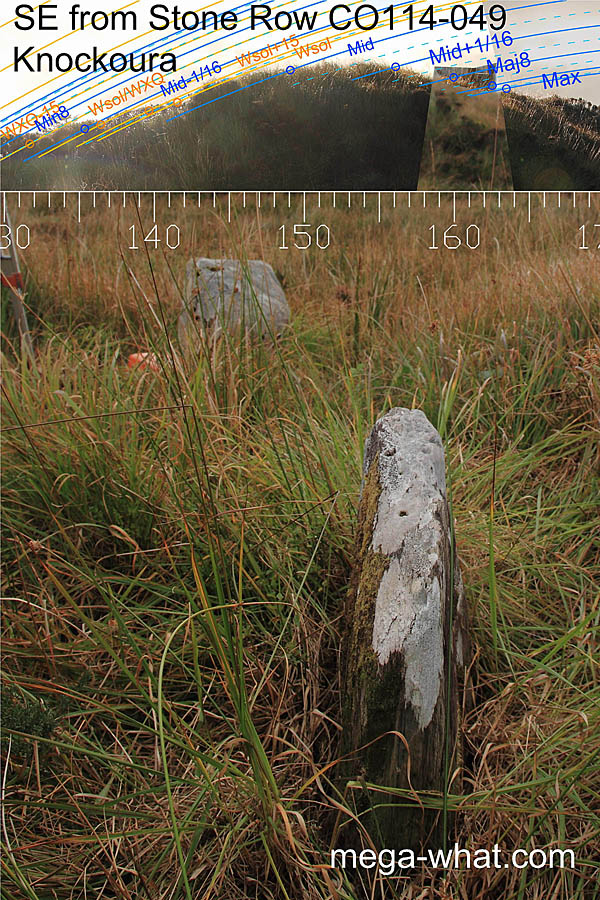 The fourth stone is a thin slab and its axis indicates the centre of the major half of the south-eastern lunisticeLunistices are the most northerly and southerly moons of the month. The lunar equivalent of solstices - more.
range on very local ground.
The fourth stone is a thin slab and its axis indicates the centre of the major half of the south-eastern lunisticeLunistices are the most northerly and southerly moons of the month. The lunar equivalent of solstices - more.
range on very local ground.
More about Knockoura Stone Row.
References
- Archaeological Survey of Ireland, record details. www.archaeology.ie/archaeological-survey-ireland
- POWER, D. et al. 1992 Archaeological Inventory of County Cork, Volume 1: West Cork. Dublin: Stationary Office. p396, no.3533.
- RUGGLES, C.L.N. 1999 Astronomy in Prehistoric Britain and Ireland. Newhaven & London: Yale University Press. CKR83.
